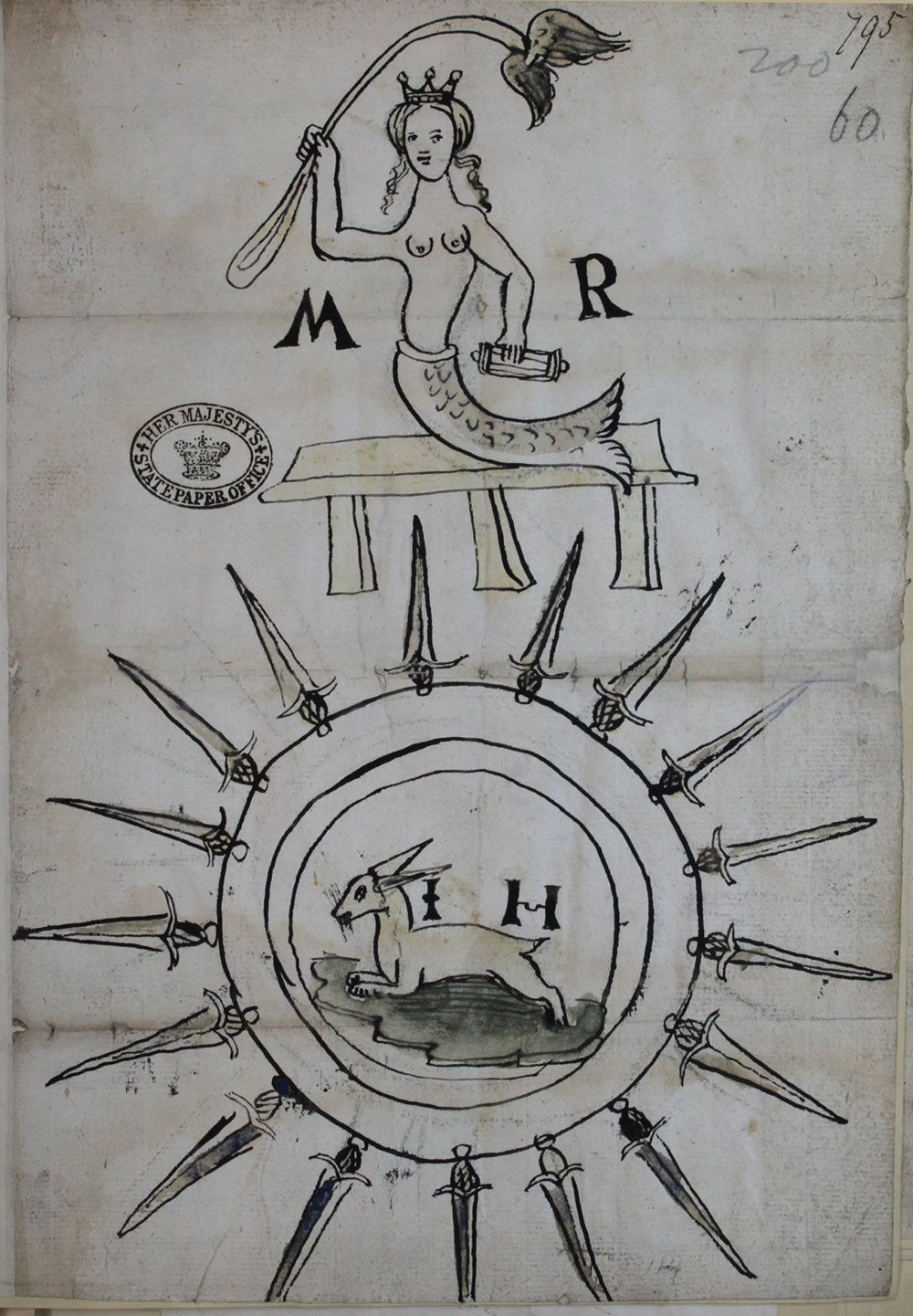Mermaids have been subject to global fascination with their tales being told on both the big and silver screen, along with several myths and folklore surrounding them. It may come as a surprise to some, as it was to me, that mermaids actually have been around a lot longer than the average person might assume, having some roots in the Middle and Medieval ages. Although there is some debate to be had about the alleged sighting of the first ever mermaids, there are three common origin stories believed throughout the globe. There is the tale of Thessalonike, the sister of Alexander the Great. It is said that after Thessalonike died, she became a mermaid who when she would encounter sailors, she would ask the potentially fatal question of her brother’s status on whether he was alive or not. When met with the answer yes, the waters would remain calm letting the sailors pass through alive. If the answer was no, she would stir a disastrous storm, wrecking the ship and killing its passengers. Then there is Oannes, a merman whose origin dates back to the 4th century. Oannes was a Babylonian god who would share knowledge of science and art with humans during the day along the Persian Gulf, and then return to the sea at night. Lastly, there is the lovely Atargatis. Her story is a bit more tragic than that of Oannes, as she fell in love with a human and had a daughter who would become the queen of Assyria, but she somehow accidentally killed him. Burdened with guilt and sorrow, she attempted to drown herself in the ocean and became a mermaid. As she was unmistakably beautiful, she became the goddess of femininity and water, having strong ties to the moon and fertility. 
Understandably, the mermaid myth is often intertwined with the siren myth. The modern versions of both creatures are very similar, but this is not the same for their respective histories. The siren has its origin in Greek mythology, as opposed to Babylonian origins, actually initially being betrayed as three women who had been giving the bodies of birds by the hands of Demeter in order to aid in her search for her daughter Persephone after she was kidnapped by Hades. The sirens did not find her, being cursed with half bird bodies as punishment. Another distinguishing factor is that although there have been some cases like Thessalonike where mermaids bring destruction to the men who arrive in their surrounding waters, this is the sirens most notable trait. They would often sing around sailors, placing the men in a daze that would make their ships crash.
In either cases however, the warnings of temptation and seduction always come to play. There are English churches and chapels that depict paintings of mermaids. Mermaids were used as a cautionary tale in medieval Europe about falling into sin and lust, using the seduction tactics they were believed to have had as a device to scare men into thinking mermaids, and subconsciously women, were walking (or swimming) paths to eternal soul damnation. There were often carvings of mermaids in Medieval churches with mirrors and combs, a symbol of vanity, lust, and shame. They also were used a way to separate Christianity from the Pagans.
This negative connotation of mermaids did not just reach Europe, but other regions all over the world. In eastern Europe, they were thought to be souls of tortured women who died horrible deaths. In some countries, they are depicted as flying snakes. Although this underlying current of sexism should not be a surprise, there is a bit of a twist. At this point in time it was the beautiful young seductress that led a man to his death, instead of the old crypt woman.
Mermaids have made a splash, no pun intended, in mainstream media, with many TV shows, animations, and movies surrounding them. And whether you realize it or not, it has been this way for quite some time. It is thought that John Smith, who is famous for his encounter with Pocahontas both in reality and in Disney fiction, wrote about spotting a mermaid back in 1614 in the West Indies. In his diary, he allegedly wrote that he saw a green haired woman with the body of fish below the waist. This is most likely not true, as it is believed he was in this area in 1607 instead 1614, and there have been similar entries found by another author, but how funny would it be if John Smith met both Pocahontas and Ariel in his lifetime? 
Mermaids have also been associated with Mary the Queen of Scots, as her reputation went downhill after marrying James, Earl of Mothwell, implying she was a lustful prostitute. The lore of the mermaid/siren has even been made into a million dollar mogul, as she is the face of Starbucks, being depicted across cups and merchandise with two tails representing the earth and underworld, as she is guide for the souls of the dead. So in conclusion, the next time you go for your eighth cold brew for the week, take a look at the cup and ask yourself if it’s worth literally going to hell for. You’ll find yourself in an interesting position.
Bibliography
3, M.Admin | May, and M.Admin. “The Difference Between Mermaids And Sirens.” KnowledgeNuts, 3 May 2020, knowledgenuts.com/2014/02/05/the-difference-between-mermaids-and-sirens/.
“Atargatis Story of the First Mermaid.” Fairychamber, 6 Oct. 2018, http://www.fairychamber.com/blog/atargatis-the-first-mermaid.
Medievalists.net. “Mermaids in the Middle Ages.” Medievalists.net, 31 Jan. 2019, http://www.medievalists.net/2015/01/mermaids-book-treasures/.
Medievalists.net. “Murderous Mermaid: Why Siren Is More Medieval Than You Think.” Medievalists.net, 14 Apr. 2018, http://www.medievalists.net/2018/04/murderous-mermaid-why-siren-is-more-medieval-than-you-think/.
Mermaids of Earth. “Oannes, the Fish-Man God Who Brought Civilization to Babylonia.” Mermaids of Earth, 30 Apr. 2017, mermaidsofearth.com/a-look-into-the-tale-and-tail-of-oannes/.
The National Archives. “Sketch of Mary Queen of Scots.” The National Archives, The National Archives, 13 Sept. 2016, http://www.nationalarchives.gov.uk/education/resources/elizabeth-monarchy/sketch-of-mary-queen-of-scots/.
Published by justhistoryposts A blog all about history, et al. “Mythical Creatures: Medieval Mermaids.” Just History Posts, 5 Apr. 2019, justhistoryposts.com/2017/03/24/mythical-creatures-medieval-mermaids/.
“A Short History of Mermaids by Catherine Hokin.” The History Girls, 22 May 2018, the-history-girls.blogspot.com/2018/05/a-short-history-of-mermaids-by.html.
Simon, Matt. “Fantastically Wrong: The Murderous, Sometimes Sexy History of the Mermaid.” Wired, Conde Nast, 19 July 2018, http://www.wired.com/2014/10/fantastically-wrong-strange-murderous-sometimes-sexy-history-mermaid/.
Simon, Matt. “Fantastically Wrong: The Murderous, Sometimes Sexy History of the Mermaid.” Wired, Conde Nast, 19 July 2018, http://www.wired.com/2014/10/fantastically-wrong-strange-murderous-sometimes-sexy-history-mermaid/.
“Siren (Mythology).” Wikipedia, Wikimedia Foundation, 6 May 2020, en.wikipedia.org/wiki/Siren_(mythology).
Starbucks, stories.starbucks.com/stories/2016/who-is-starbucks-siren/.
Thompson, Helen. “The Murky Tale of John Smith and the Mermaid.” Smithsonian.com, Smithsonian Institution, 25 June 2015, http://www.smithsonianmag.com/smart-news/no-john-smith-did-not-see-mermaid-1614-180955692/.
